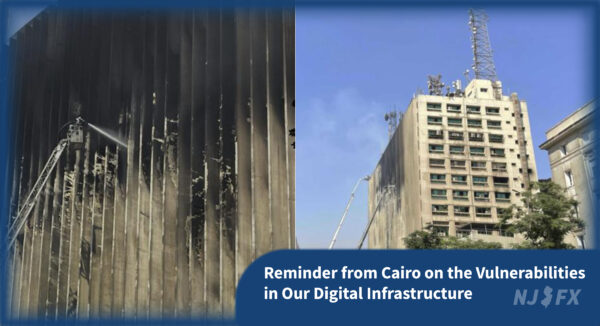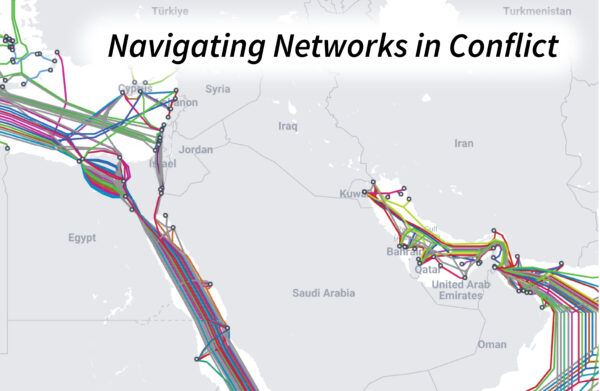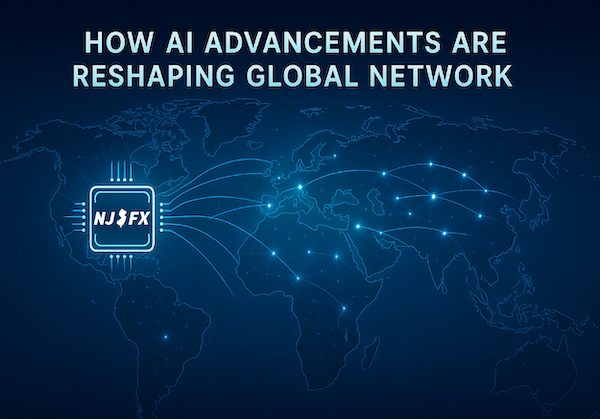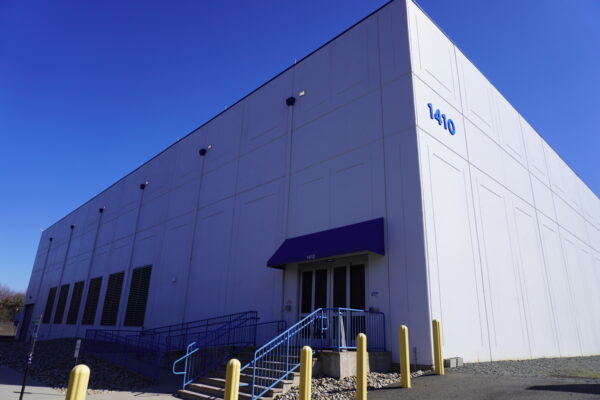
A Sobering Reminder from Cairo on the Vulnerabilities in Our Digital Infrastructure
Red Sea conflict threatens Key Internet Cables. Maritime attacks complicate repairs on underwater cables that carry the world’s web traffic.
Kevin Ayerdis + Emily Newman
February 16, 2023

Hello and welcome back to Luminaries in Telecom!
April’s luminary feature is an established leader in the industry and actively advises numerous boards and private equity firms. His tenure stems from his service as a field artillery officer in the Army after graduating from West Point. We are coining him, “The Industry Vet” aka William (Bill) LaPerch. LaPerch has ties in just about every sector of telecommunications industry from data centers to cloud and fiber. He has collaborated alongside some of the biggest names in the industry. He granted us the opportunity to learn some exclusive insights into his storied career.
History in the Making
LaPerch was born in the Bronx in New York City, being the eldest son of seven children. His father set an early example of service to the community as a New York City Police officer. He remembers interesting talks at the family dinner table as his father was the “Kojak” (aka the Detective Lt. in charge) with Manhattan South homicide unit. His was a family of devout Catholics that further formed his background. After graduating JFK Catholic High School and feeling the call to serve similarly to his father, he attended the iconic U.S. Military Academy at West Point. This experience gave him a real lesson in leadership and the skills he would use throughout his career.
After graduation in 1977, earning his BS in Science he was commissioned as an officer. In the Army he joined the famed 101st Airborne unit out of Fort Campbell, Kentucky, eventually attaining the rank of Captain. LaPerch reminisced with a smile about his service, where repelling out of helicopters and parachuting out of planes trained him to remain steadfast under pressure.
He brought his unique skillset to the civilian world and quickly found an opportunity through New York Telephone’s MCDP (Management Career Development Program) program, a career development initiative looking for veterans to take management positions.
Climbing Telephone Poles to Success
LaPerch’s telecom journey began upon joining NY Tel where he was tasked in managing various outside plant operating teams. He was faced with his first major challenge; multiple lengthy union strikes that forced him to learn the technical side of the field. This required him to climb into manholes, clamber up telephone poles and splice wires. While navigating these hurdles, he met his first mentor, George Barletta. Barletta saw and believed in LaPerch’s potential. He offered to be a sponsor in furthering LaPerch’s education and encouraged him to get an MBA at Columbia.
This ultimately would lead to another opportunity that LaPerch could not pass up, when an old colleague of his urged him to join MCI. As LaPerch remembers, Nate Kantor, a fellow West Point alum, badgered him for months attempting to recruit him to MCI. He remembers saying to Nate, “I might be interested but I’m not leaving a company that’s on strike, they need my help”. On the day the strike finally ended, he made the decision and climbed all the way up a telephone pole and called Nate right then and there and said, ‘OK Nate, I’ll take the job!’”
Jumping on board with MCI in 87’ the world opened up to the young New Yorker now tasked with traveling across the country building out fiber networks. He used the tools of the time, such as, V-Net, Friends and Family and the advent of the newest innovative system that was about to change the world, email.
LaPerch reflected “as silly as it sounds today, when I joined MCI, the paradigm shift was from a company that communicated over days and weeks via carbon copies to one that communicated instantaneously by way of email.”
LaPerch expressed, “It was great timing to join the David vs Goliath fight in MCI’s growth. It was a faster, more flexible environment – think DIY guerrilla warfare much more so than the structured groups I had become accustomed to. The team of people I worked with were the do-it, fix-it-type mentality. Many of my successes can be traced to life-long friendships and connections I made while at MCI. It was truly life changing.”
After a 10-year run at MCI, it was time for another change as World-Com acquired MCI. LaPerch, with many of his peers, left MCI since this wasn’t an acquisition they wanted to work for. The next step in his career took him back to his home state with Metromedia Fiber Network. A novel group for LaPerch to join as it was the first company to construct fiber into the metro market, rather than between cities as was standard at the time. LaPerch crafted a reputation as a capable operator and was granted permission to be captain of the “dream team”.
Rising Ranks
LaPerch onboarded fifteen of his best from MCI to run all the cities where Metromedia was established. Working as a collective in achieving these lofty goals of effectively competing in ILEC dominated local markets, Metromedia ended up spending about four billion dollars in building networks out in thirty major cities and eight major European markets. Six months into his time, the infamous Internet bubble burst, causing massive reorganization/rebranding for not just Metromedia, but the entire industry.
LaPerch had much to say about his experiences during this time of the industry and what he was able to achieve, “I was COO of the company and it had gone bankrupt… I was able to convince a former colleague from MCI, John Gerdelman, himself a former Navy Top Gun Pilot, as well as my leader and mentor at MCI to become the CEO. John fulfilled his role of handling all the messy and complex bankruptcy related issues, while I essentially ran the company. After all was done and the dust cleared, John left to pursue his own projects while I took over as CEO of the newly coined AboveNet.
After restructuring we were able to essentially build the company on the back of enterprise thirst for high bandwidth fiber solutions. We enjoyed 11 years of double-digit growth and we were able to build value effectively. In 2012, we sold our company to Zayo for $2.25 billion. Our shareholders enjoyed a 13x return over this period. Out of the fifteen that joined me from MCI, fourteen had stuck it out with me through it all. We did it as a team and all of us were rewarded financially. That team was what created the value. I was the CEO, but clearly the team around me was the reason for my success.”
“Having great assets is a good thing, having great people around you is much more important” LaPerch said. “Anyone can put people around themselves that complement them. I think great leaders find a way to put people around themselves that supplement them. Doing that really strikes me as being important for success in business.”
After selling AboveNet, LaPerch has remained active through his own firm LaPerch Consulting. As many of you readers know, he serves on numerous boards for some of the big names in the industry including Windstream, Digital Realty Trust, First Light, ITG and South Reach Networks to name a few.
“One of the things I learned through my board experience is how to toe the line between oversight and management. I have a penchant for action. When I see something wrong, I want to fix it or get involved in fixing it. That’s not really a board’s responsibility. The responsibility is to provide oversight so management can go do those things,” he said. “Additionally make sure when you interact with management, you do it with the intention of creating value for the company and not just creating more work for an already busy management team.”
LaPerch offered some insights about where the industry is heading with Fiber and with The Edge.
“Basically, The Edge is about gathering and storing data closer to where the data lives,” he said. Networks don’t need to bring all the information to centralized locations. “You’d rather have Edge collection points all around the country where you would store and manipulate the data, and then return it to its origin very quickly. Much of The Edge is going to be about latency and how quickly all of this is going to happen.
“To me The Edge could easily be on every cellular tower in the U.S., they all have enough space to put a few servers in,” or he said. “Why isn’t The Edge every old central office that Lumen, AT&T, or Verizon has? They are centrally located buildings that would be ideal” LaPerch summarizes by pointing out “the edge is in very early innings. There are still many things to evolve, and the final definition has not been settled on.”
“Fiber really defines where I have come from” LaPerch points out “Today, fiber and the connectivity it provides is basically a utility that everyone needs access to. While I have enjoyed watching the evolution of fiber connectivity over the past 20 years, we still have lots to do and much to build. This is evidence by the billions of dollars our government is spending to deploy it ubiquitously. Fiber is the lifeblood of digital infrastructure.”
Well said Bill LaPerch! Thank you for taking time out of your schedule to share your story and some wisdom! And of course, there is more to the story of “The Industry Vet” Bill LaPerch that we just couldn’t cover and that we may revisit in the future. A strapping young man from the boogie-down Bronx became a leader and role model for the telecom industry. This concludes this month’s feature of Luminaries in Telecom. Please feel free to add to the conversation! Have you worked alongside Bill LaPerch before? What did you take away from his adaptability and approach? Sound off in the comments below with any fun facts/specifics that may have been missed or any suggestions about any movers and shakers in telecom history you think deserve a feature. Send a message to [email protected].

Red Sea conflict threatens Key Internet Cables. Maritime attacks complicate repairs on underwater cables that carry the world’s web traffic.

New Jersey experienced an uptick in wildfire incidents during the dry season of 2025, the communications sector faced significant challenges.

New Jersey experienced an uptick in wildfire incidents during the dry season of 2025, the communications sector faced significant challenges.

Red Sea conflict threatens Key Internet Cables. Maritime attacks complicate repairs on underwater cables that carry the world’s web traffic.

New Jersey experienced an uptick in wildfire incidents during the dry season of 2025, the communications sector faced significant challenges.

New Jersey experienced an uptick in wildfire incidents during the dry season of 2025, the communications sector faced significant challenges.









Experience the flexibility, reliability, and security yourself

